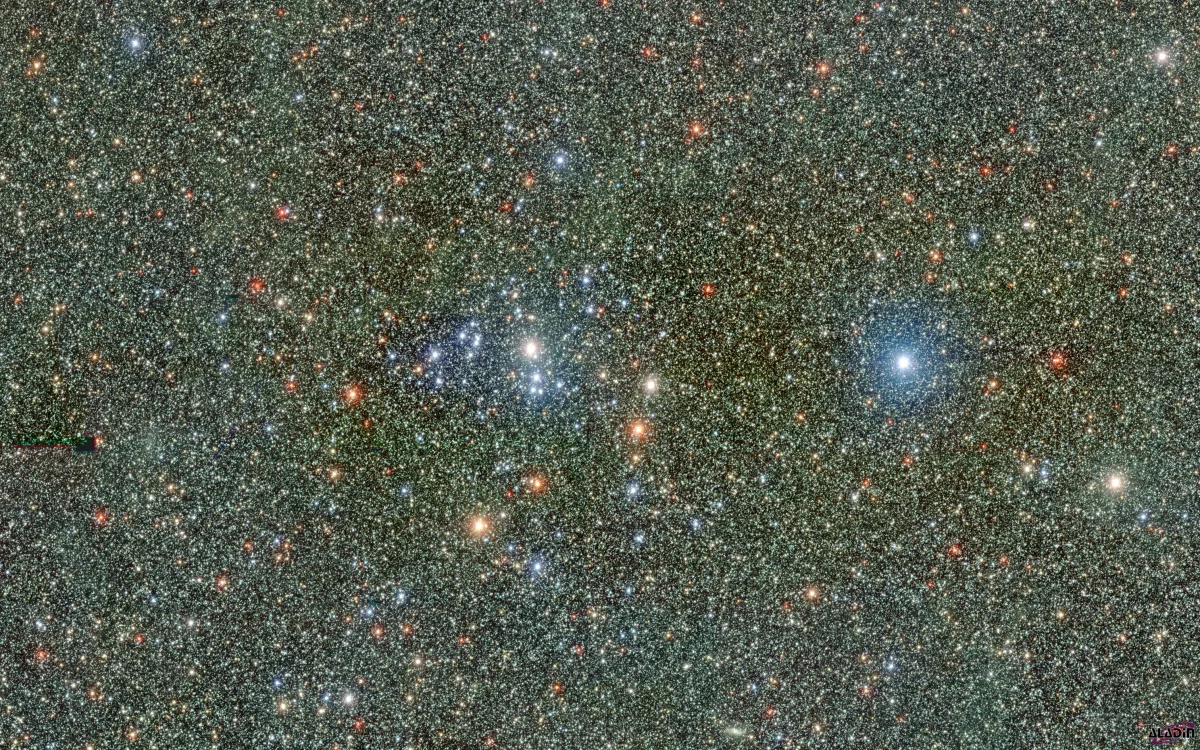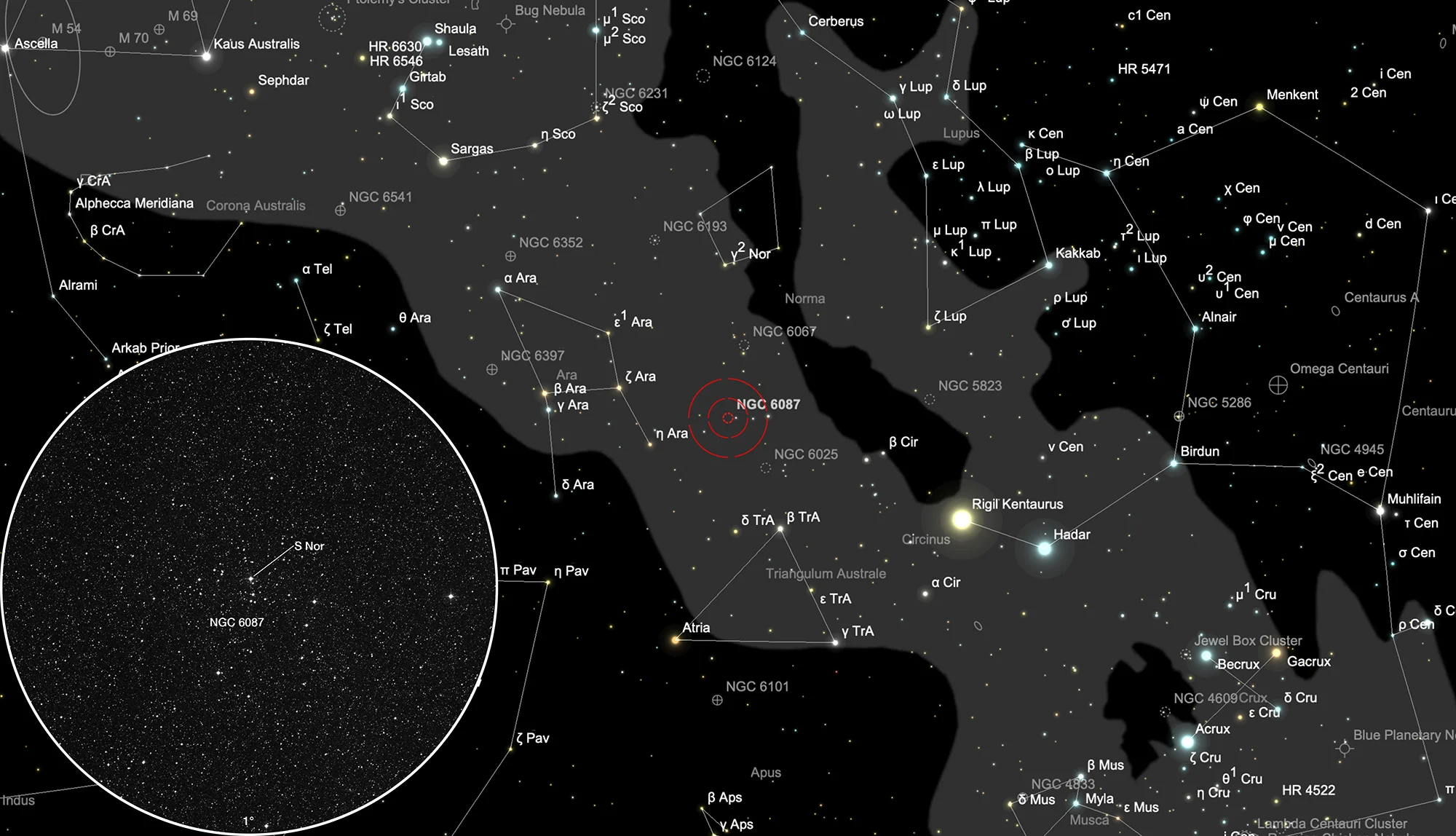Open Cluster NGC 6087

History
This open cluster was discovered by Scottish astronomer James Dunlop on 8 May 1826 using his self built 9-inch reflector, observing from his home at Parramatta (NSW) in Australia. He listed it as Δ 326, made three observations and described it as follows: «A group of an irregular branched figure, 15' or 20' diameter. The central part is very thin of stars.» [50]
John Herschel listed this cluster as h 3622 and made two observations. Sweep 575: «Cluster VIII. class; large; loose; brilliant; irregular figure, Fills field; chief star about 7th magnitude taken.» Sweep 717: «Cluster VIII.; large; coarse; bright; fills field; stars 7, 8, 9, 10 magnitudes; Star about 7th magnitude taken.» [11]
Physical Properties
| Designation | NGC 6087 |
| Type | OCL (I2p) |
| Right Ascension (J2000.0) | 16h 18m 51.8s |
| Declination (J2000.0) | -57° 53' 59" |
| Diameter | 15 arcmin |
| Visual magnitude | 5.4 mag |
| Metric Distance | 0.901 kpc |
| Dreyer Description | Cl, B, L, lC, st 7…10 |
| Identification, Remarks | h 3622; GC 4170; OCL 948; ESO 137-SC15 |
Finder Chart
The open cluster NGC 6087 is located in the constellation Circinus. Unfortunately it is not visible from Europe. On 28 May it in opposition with the Sun and is therefore highest in the sky at local midnight.
